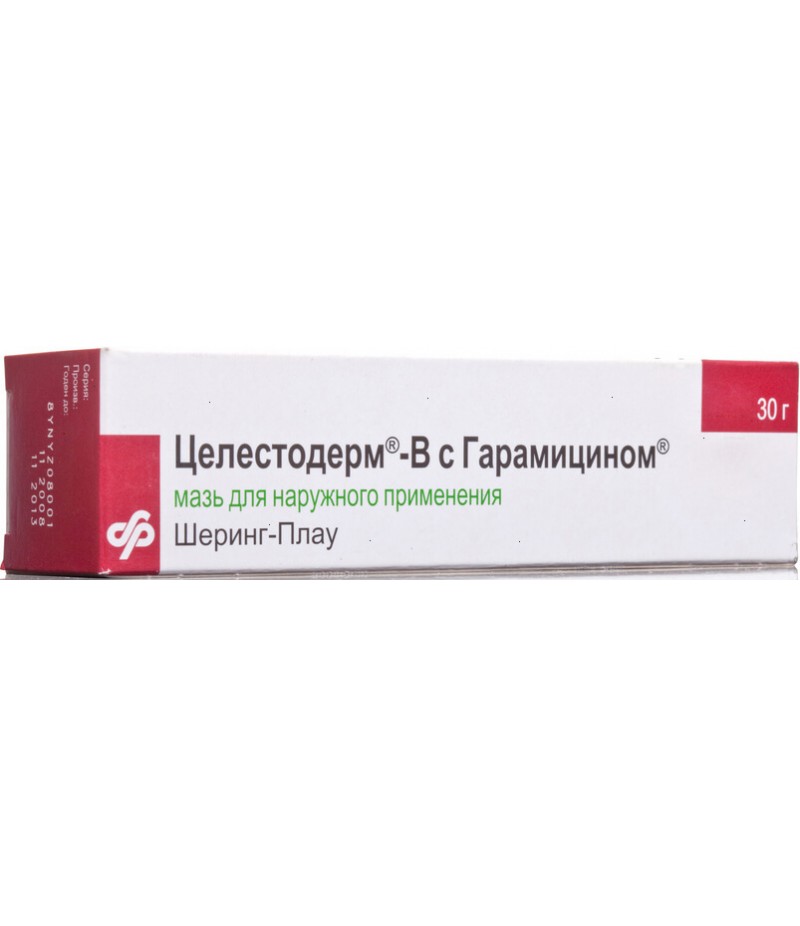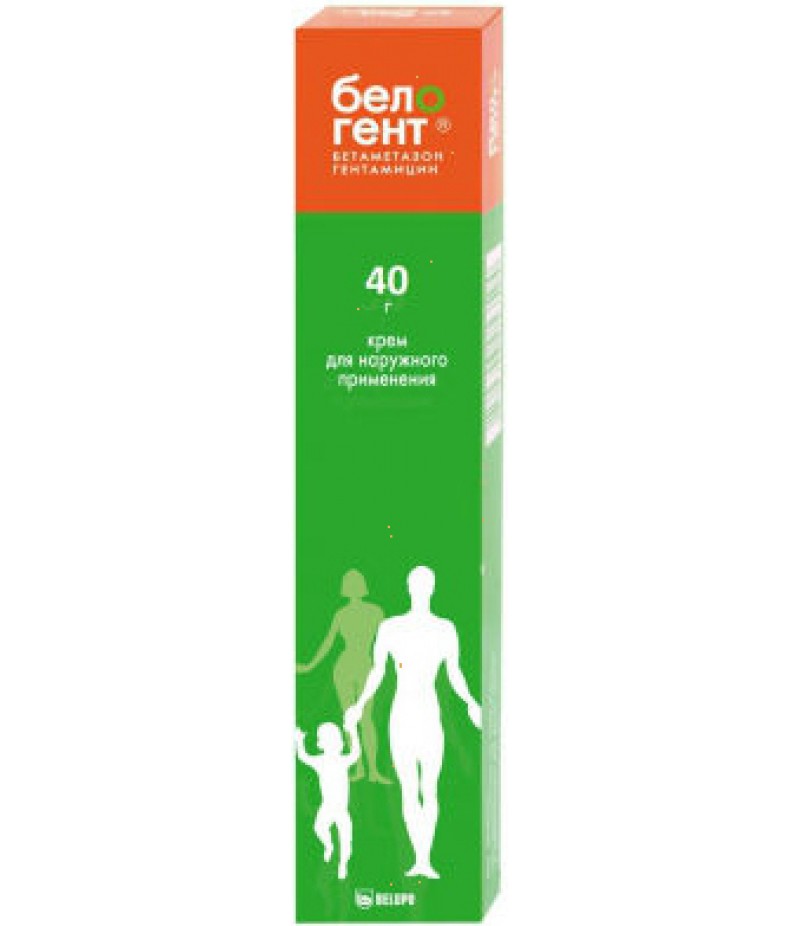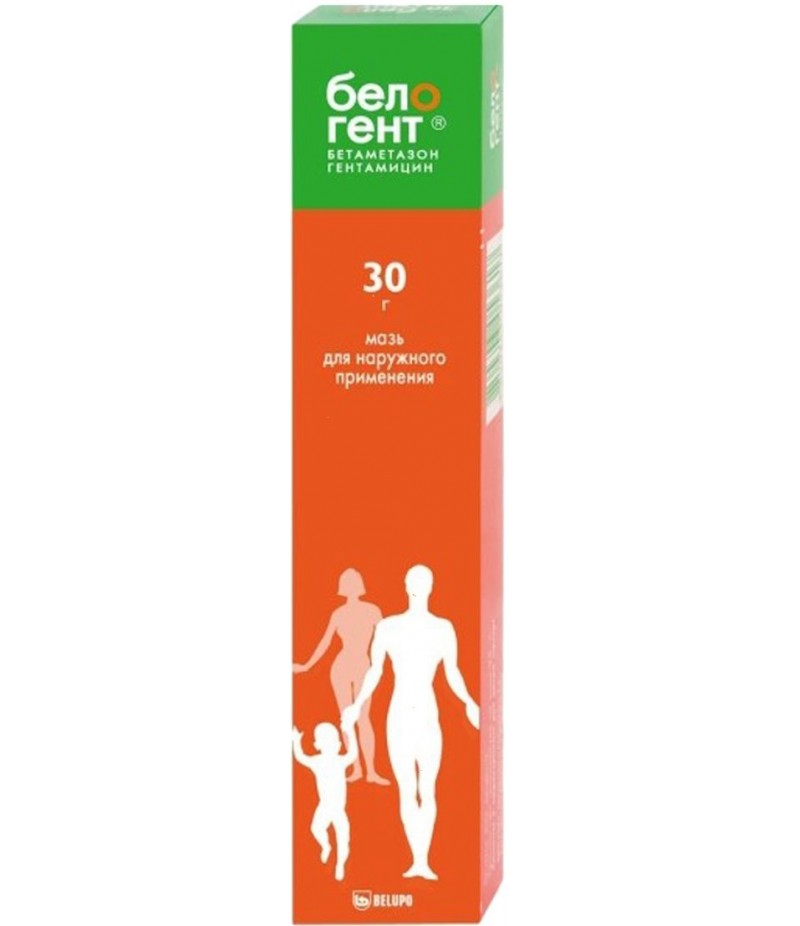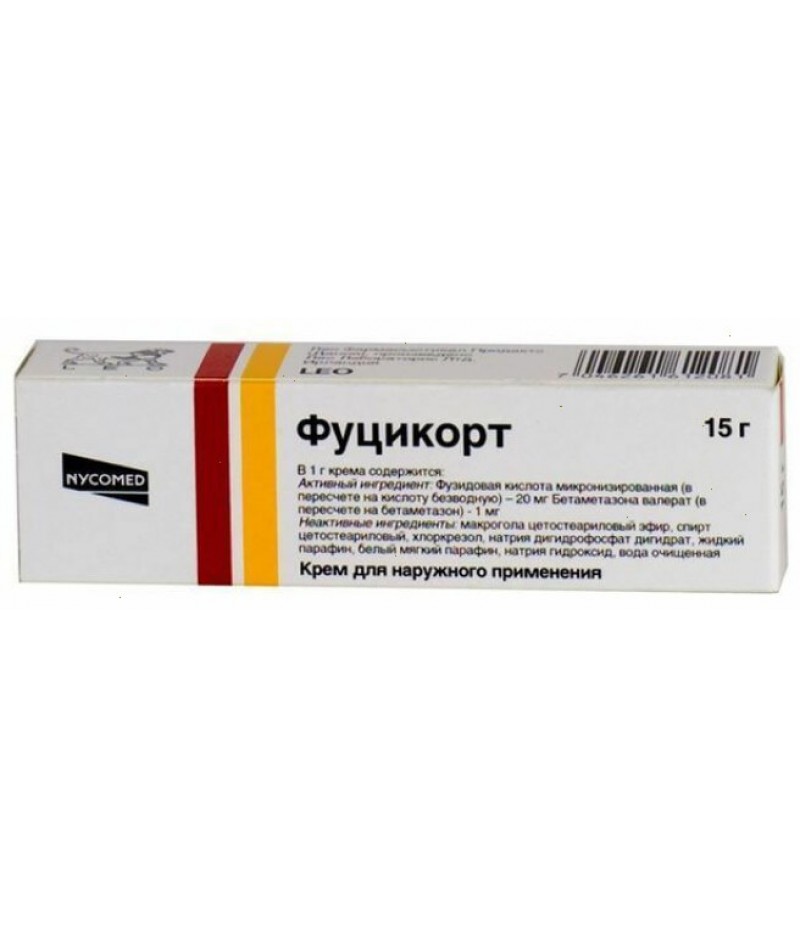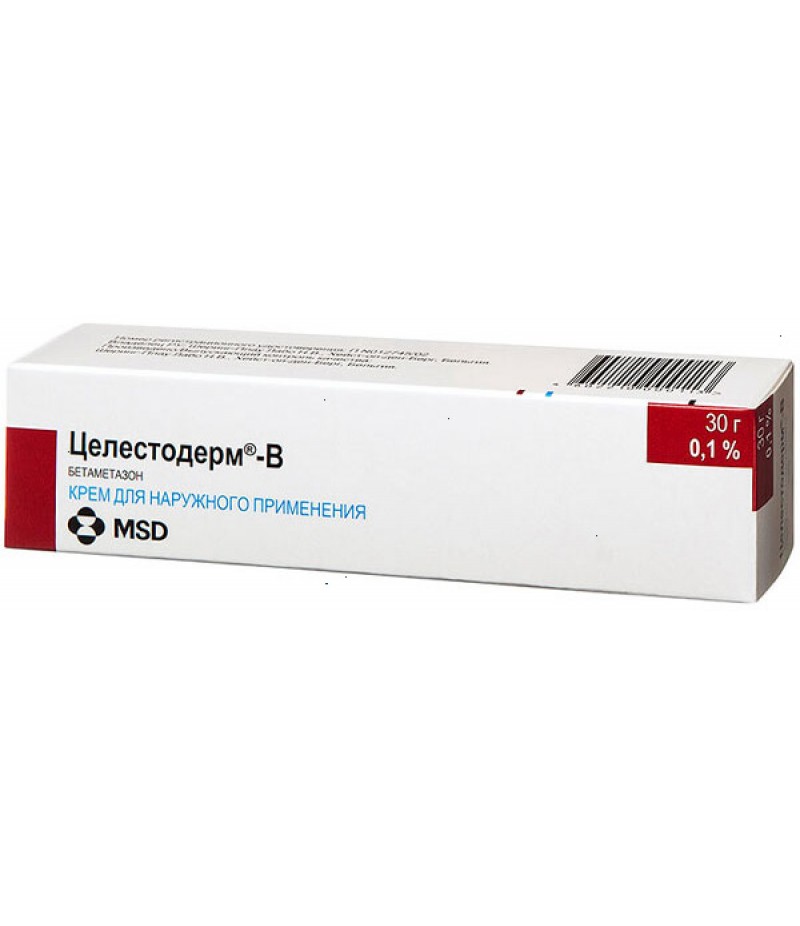Celestoderm-V with Garamycin ointment 0.1% 30gr
- $23.99$30.60
- Availability:In Stock
Celestoderm-V with Garamycin instructionYou can buy Celestoderm-V with Garamycin hereComposition Ointment Celestoderm-V with Garamycin in the amount of 1 gram includes 1 mg of Garamycin and 1 mg of betamethasone...
Tags: ointment
Celestoderm-V with Garamycin instruction
You can buy Celestoderm-V with Garamycin here
Composition
Ointment Celestoderm-V with Garamycin in the amount of 1 gram includes 1 mg of Garamycin and 1 mg of betamethasone. Additional substances: liquid paraffin, white soft paraffin.
Form of issue
White homogeneous ointment of soft consistency, without visible inclusions. 15 or 30 grams of ointment in an aluminum tube, 1 tube in a cardboard bundle.
pharmachologic effect
Local glucocorticoid and local antibacterial action.
Pharmacodynamics and pharmacokinetics
Betamethasone has an anti-inflammatory and anti-allergic effect due to inhibition of the release of prostaglandins and cytokines, slowing the metabolism of arachidonic acid, lowering the permeability of arteries and veins, stimulating the synthesis of lipocortins having a decongestant effect.
Garamycin is a broad-spectrum antibiotic. Effective against most common microorganisms for local use. Sensitive strains of the genus Streptococci (beta and alpha-hemolytic), Staphylococcus aureus (coagulase negative, coagulase-positive and a series of penicillin-synthesizing strains) and Gram-negative bacteria are among the susceptible bacteria: Aerobacter aerogenes, Klebsiella pneumoniae, Pseudomonas aeruginosa, Proteus vulgaris, Escherichia coli .
Indications for use
Inflammatory skin diseases that are sensitive to glucocorticosteroid therapy, if a secondary infection (sensitive to Gentamycin treatment) occurs or if there is a suspected infection:
contact and seborrheic dermatitis;
neurodermatitis;
radiation dermatitis;
eczema;
sunny dermatitis;
exfoliative dermatitis;
psoriasis;
intertriginous dermatitis;
anogenital itching.
Ointment is used mainly for lesions that occur on the background of psoriasis or eczema, and the cream - for skin diseases of a moist or fatty type.
Contraindications
allergy to the components of the drug;
tuberculosis of the skin, chicken pox, skin symptoms of syphilis, fungal skin lesions, herpes simplex;
pregnancy and lactation;
the vaccination period and post-vaccination skin reactions;
age less than 6 months.
Celestoderm-V with Garamycin should be used with caution in the following conditions and diseases: pregnancy, prolonged therapy of extensive areas of the skin.
Side effects
When using local glucocorticosteroids, the following adverse reactions were recorded: irritation, dryness and burning of the skin at the site of application, hypertrichosis, folliculitis, hypopigmentation, acne, allergic dermatitis, neutral dermatitis, skin maceration, skin atrophy, secondary infection, sweating and striae.
With prolonged therapy or applying to large areas of the body, it is possible the emergence of systemic side effects characteristic of glucocorticosteroids: insomnia, weight gain, increased blood infection, agitation, menstrual disorders, hyperglycemia.
The following adverse reactions were recorded in children receiving the described agent: Cushing's syndrome, suppression of the hypothalamic-pituitary-adrenal system, growth retardation, increased intracranial pressure, lag in weight gain. Signs of oppression of the adrenal cortex in children of childhood include: a decrease in the content of cortisol in the blood, the lack of response to activation of adrenocorticotropic hormone. Strengthening of intracranial pressure can be detected by the bulging of the fontanel, edema of the disc of the optic nerve and is accompanied by a headache.
Instructions for the use of Celestoderm-V with Garamycin (Method and dosage)
Instructions for Celestoderm-V Ointment with Garamycin
Ointment is applied only externally. It should be applied to the affected areas twice a day (in the evening and in the morning), depending on the severity of the disease. A different frequency of application can be established by the attending physician based on the severity of the disease. In uncomplicated cases, a single application of the ointment is sufficient, and with very serious disorders, it may be necessary to apply the agent more frequently.
Overdose
Signs of an overdose. Excessive or prolonged local administration of glucocorticosteroids may cause suppression of the pituitary and adrenal glands, which may lead to secondary hypofunction of the adrenal cortex and symptoms of hypercorticism, including Cushing's syndrome.
An overdose of gemtamycin is usually not accompanied by the development of any symptoms. Continued use of Garamycin in high doses can lead to excessive growth of resistant microflora in the lesion.
Overdose therapy: symptomatic treatment. If necessary, monitoring and correction of electrolyte imbalance is recommended. Acute hypercorticism, as a rule, is reversible. In the case of prolonged exposure, slow elimination of glucocorticosteroids is recommended.
If uncontrolled bacterial growth is observed, antifungal or antibacterial therapy should be initiated.
Interaction
There is no data on interactions with other drugs.
Storage conditions
Store at temperatures up to 25 degrees. Keep away from children.
Shelf life - 5 years.
special instructions
If the effect of treatment is absent within 14 days, then it is necessary to consult a doctor with the purpose of clarifying the diagnosis.
If, when using the drug, irritation or an allergic reaction is detected, the treatment should be stopped and the patient should be adequately treated.
When a secondary bacterial or fungal infection occurs, it is recommended that appropriate medications be prescribed. If this rapid healing effect is not achieved, then the use of glucocorticosteroids should be discontinued until all signs of infection are eliminated.
Any adverse reactions of systemic glucocorticosteroids, for example, suppression of the adrenal glands, can also be recorded with the use of local glucocorticosteroids, especially in children.
Absorption of local glucocorticosteroids and local forms of Garamycin into the systemic blood stream is increased with their long-term use, in the treatment of large body surfaces or in the application of occlusive dressings, and in the treatment of children.
With local use of antibiotics, the growth of resistant microflora, including fungal growth, is possible. In such cases, treatment should be stopped and pathogenetic therapy prescribed.
Cream and ointment Celestoderm-V is only allowed for external use and is prohibited for use in ophthalmology.
The following adverse reactions were recorded in children receiving the described agent: Cushing's syndrome, suppression of the hypothalamic-pituitary-adrenal system, growth retardation, increased intracranial pressure, lag in weight gain. Signs of oppression of the adrenal cortex in children of childhood include: a decrease in the content of cortisol in the blood, the lack of response to activation of adrenocorticotropic hormone. Strengthening of intracranial pressure can be detected by the bulging of the fontanel, edema of the disc of the optic nerve and is accompanied by a headache.
Children
The drug is approved for use in children older than 6 months. Children of childhood are more susceptible to treatment with local glucocorticosteroids than adult patients, due to increased absorption of the drug.
In pregnancy and lactation
The safety of using the described agent in pregnant women is not established, therefore its appointment during pregnancy can be justified only in the presence of strict indications and under the supervision of the attending physician. The drug should not be given to pregnant women in the first trimester, as well as in large doses or for a long time.
To date, it has not been determined whether local glucocorticosteroids can be excreted in breast milk, so breastfeeding or taking the drug should be stopped, given the need for its use for the mother.
Reviews of Celestoderm-V with Garamycin
Reviews of the drug generally correspond to reviews about preparations of analogues. Patients respond with satisfaction to the drug in most cases. Adverse events and cases of inefficiency are rare. It is worth remembering that the treatment described by the device should be carried out under the supervision of the attending physician.

